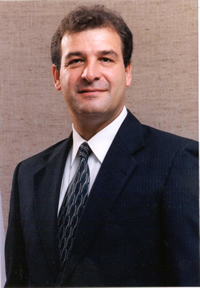Some First Nation communities have initiated solar and wind power and mini hydroelectric initiatives but more needs to be done to ensure that all remote communities have access to clean and affordable energy.
Renewable Energy Vital for First Nation and Remote Communities
Robert Daniel “Bob” Nault for | American Vanadium Corp.
There are over 630 First Nation governments across Canada serving a population of over 700,000 people. A good number of these communities, which are located in northern and remote locations, are off the grid and rely on environmentally-unfriendly diesel generators for their electrical needs which are a source of air pollution, greenhouse gas emissions and contribute to smog formation which can affect community health. Not only is diesel power bad for the environment, it is also expensive and unreliable. These communities pay, both directly and indirectly, more for their power than anywhere else in North America, even with government subsidies and programs.
 As former Minister of Indian Affairs and Northern Development, I saw firsthand how First Nation communities sought to reduce greenhouse gases and understood the importance of sustainable development. Some First Nation communities have initiated solar and wind power and mini hydroelectric initiatives but more needs to be done to ensure that all remote communities have access to clean and affordable energy.
As former Minister of Indian Affairs and Northern Development, I saw firsthand how First Nation communities sought to reduce greenhouse gases and understood the importance of sustainable development. Some First Nation communities have initiated solar and wind power and mini hydroelectric initiatives but more needs to be done to ensure that all remote communities have access to clean and affordable energy.
It’s time for private enterprise and government to collaborate with First Nations and other remote communities to make clean affordable renewable energy available. Prime Minister of Canada, Stephen Harper, recently announced his support for development of clean energy in Northern Quebec.
“Our Government’s investment in innovative clean energy technologies is creating jobs, generating new economic opportunities and protecting the environment in Northern Quebec and across Canada,” said the Prime Minister. “Through our responsible resource plan, competitive tax rates and investments in skills training, Canadian resource companies are growing, creating jobs and improving the quality of life of Northern communities."
As the Prime Minister has recognized, the first steps in making a change to clean energy technologies is recognizing that there are solutions out there. Our country, including provincial/territorial and individual communities, needs to collectively understand that our energy fix won’t be solved unless we move to wind, solar and hydro solutions and secure efficient and economically viable energy storage solutions.
Two phrases that are becoming common place are "smart grid" and "microgrid" -- and the key to both is storage. Smart grid is all about improving the efficiency of the generation, distribution and use of energy, while microgrid is the creation of off-grid generation and distribution of energy using renewable sources such as wind and solar. Neither is efficient unless you have the ability to store the excess electricity being generated so that it can be used later, when it is needed. The most cost-effective solution is to store whatever renewable energy is created, and then release it to the grid at the optimum time to avoid both shortfalls and overloads.
Today, I am working with American Vanadium to offer renewable energy generation combined with their CellCube energy storage system as a viable means for meeting community needs and contribute to Canada's future electrical supply to serve First Nations and northern communities. The CellCube energy storage system, developed by Gildemeister, has been field tested and proven in practice for over five years, with installations across the world.
Clean and sustainable energy is of vital importance to the prosperity of Aboriginal communities as well as North America's economic and environmental future. How can we contribute to Canada's future electrical supply to serve First Nations and other remote communities? We need to evaluate all alternative energy solutions and determine which ones can provide cost-effective and environmentally responsible value. We can attain this by working with governments to develop policies that nurture sustainable development for First Nations and working with communities to recognize sustainable energy opportunities and build the capacity needed to undertake successful projects.
About the author:
Robert Daniel “Bob” Nault served as Minister of Indian Affairs and Northern Development. Currently, he is developing energy storage and renewable microgrids for remote communities and First Nations in Canada and the United States with American Vanadium as well as advisory and consulting services high technology companies, First Nations and major public sector organizations.
The content & opinions in this article are the author’s and do not necessarily represent the views of AltEnergyMag
Comments (0)
This post does not have any comments. Be the first to leave a comment below.
Featured Product

